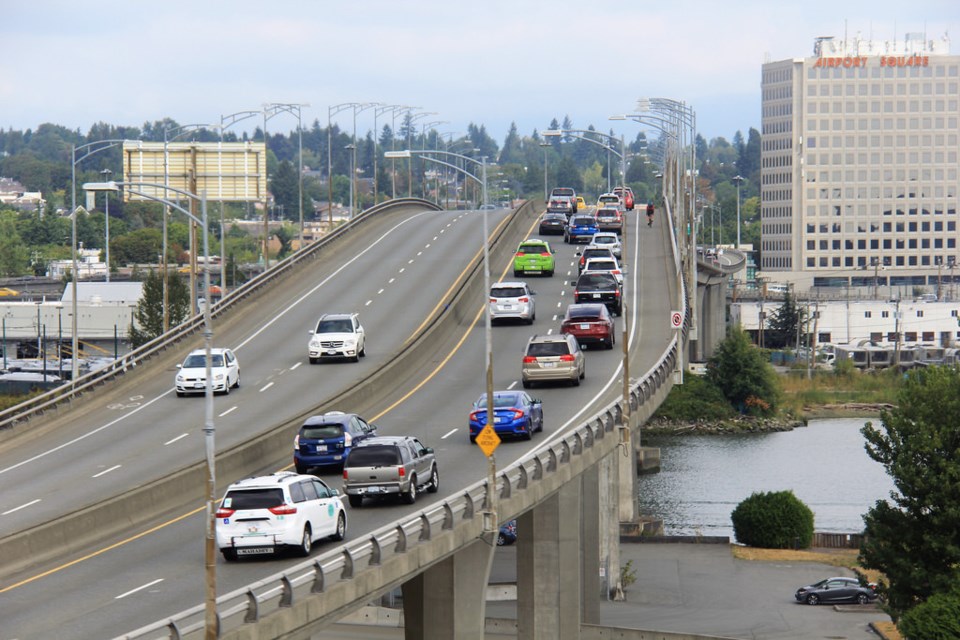Richmond drivers will be free to roam Lulu Island for a nickel or dime, or so, per kilometre or face a charge the moment they take their vehicles over the Fraser River — should either of two mobility pricing schemes recommended by the Mobility Pricing Independent Commission ever come to fruition.
On Thursday the commission released its report on mobility pricing — a driving surcharge, or tax based on road usage, as a means to cut congestion and support transportation investments in the Lower Mainland. It recommends two options for further study by TransLink, the region's transportation authority overseen by the Mayors' Council.
First is a congestion point charge, whereby all of the regionally important crossings (including any bridge or tunnel out of Richmond) and some points in New Westminster and Burnaby (Burrard Peninsula) are tolled upwrads of $5. Such a measure would cost the average household $5-8 per weekday, or $1,800-$2,700 per household per year. It is noted that this system should be complemented by strategic non-bridge locations, one being North Road in Burnaby.
Commission member and Richmond resident Bruce Rozenhart said the commission is well aware of Richmond being an island and should such a plan be implemented it must be equitable.
“I can tell you it was certainly brought up and discussed,” he said.
This scheme would see charges vary based on location, direction of travel, and time of day. Higher charges would reflect greater congestion. For instance, if you were to travel across the Oak Street Bridge during the morning rush hour, the fee would be much higher.
TransLink would need to install on-street charging infrastructure (licence plate readers) at an estimated cost of up to $350 million with annual operating costs set at up to $200 million. Annual net revenue would be $1.1 billion to $1.5 billion.
The “buck-a-bridge” concept was found to have no impact on traffic and inefficient.
“Our research demonstrated that charging only a dollar per bridge is too low to have any meaningful impact on traffic levels, meaning there would be no improvements in congestion.
“Annual gross revenue of charging a dollar per bridge is estimated at $390 million. However, annual system costs are estimated at $210 million,” notes the report.
Second is a distance-based charge with two or more zones with varying charge rates throughout Metro Vancouver. This would cost the average household about $3-$5 per weekday, or $1,000-$1,700 per year and raise a similar amount of money as the congestion points. Such a system would capture drivers who do not exit Richmond frequently. Such a system would require an on-board tracking system. The number and exact boundaries of zones for this approach are still to be determined and refined. However, as an illustration, the report showed seven regional zones all with varying costs (Downtown Vancouver being the most expensive). Charges would vary within each zone by time of day. As an example, Richmond drivers would be charged 12 to 17 cents per kilometre during the morning rush hour and two cents in off-peak hours.
More investigation and refining on the two approaches are required, said the report. Implementing a system could come within 5-6 years.
“These illustrative concepts will require more work, particularly to understand the costs for households and businesses; what should happen to the fuel tax, transit fares, and other taxes; whether there would need to be a cap on daily costs; and the need for exemptions for certain people (low-income) or vehicles,” stated the report.



